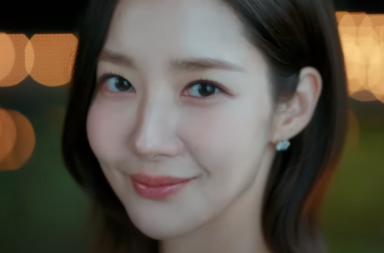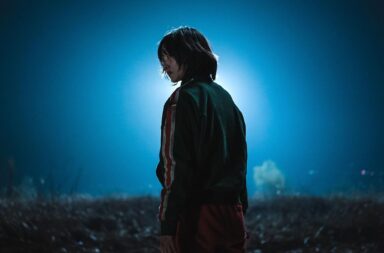It’s Okay to Not Be Okay, alternatively titled Psycho but it’s Okay, is a modern-day interpretation of a fairy tale. Drawing upon the conventions of the genre, the drama tells the story of an unusual romance between two people with difficult pasts. By following the conventions of the fairy tale genre, the drama is able to tell a story that feels familiar to viewers. At the same time, by drawing upon darker elements of fairy tales and modernizing common themes, the drama is able to defy expectations and redefine ideologies surrounding “good” and “evil.”

It’s Okay to Not Be Okay focuses on the psychological dramas implicit in many fairy tales (think of the abusive treatment in “Bluebeard”). Through the familiar lens of the fairy tale, the drama explores topics like complex family dynamics, mental health, and the lasting impacts of childhood trauma. Through well-developed visual storytelling techniques and well-acted and developed characters, It’s Okay to Not Be Okay successfully explores heavy themes with care. Though at times the drama loses its pace, draws too heavily upon tropes, and opts for gimmicky resolutions, it is overall worth the watch.
This review contains spoilers for the drama.
The drama begins by introducing its central characters and conflicts using the language of fairy tales: “A long time ago, there lived a beautiful girl in a castle located deep inside the forest.” This beautiful girl is Ko Moon-young (Seo Ye-ji), a children’s book author who makes children cry. She incites fear and intrigue in those around her, including her publisher who speaks covertly about her Antisocial Personality Disorder (APSD). One day, she meets Moon Gang-tae (Kim Soo-hyun), a healthcare worker at a psychiatric ward whose life seems to revolve around caring for his older brother, Moon Sang-tae (Oh Jung-se), a promising artist with Autism Spectrum Disorder (ASD) who is obsessed with Moon-young’s books.
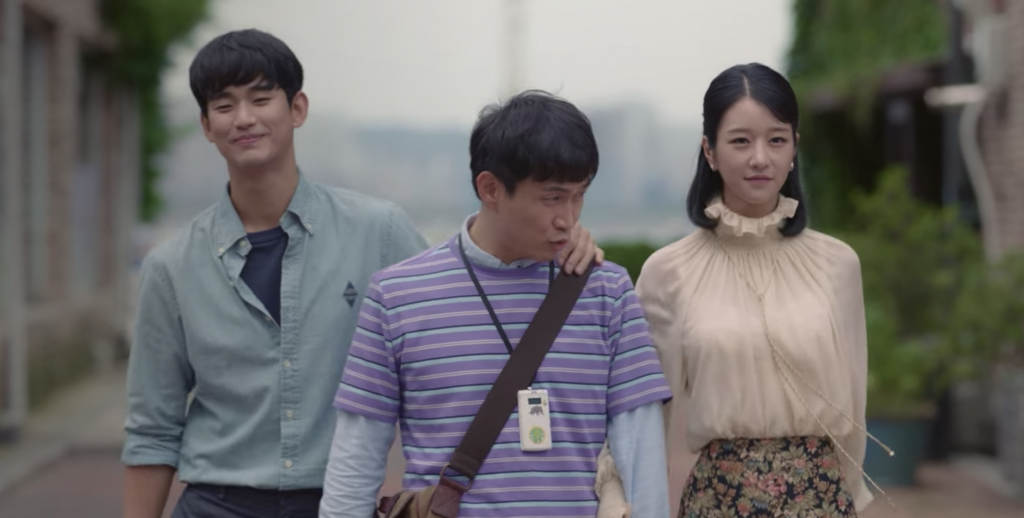
The first scenes of the drama feature a beautiful stop-motion animation sequence that underscores the feeling of fantasy and sweep audiences into the fairy tale (“A long, long time ago…”). There is a great synergy between the script and the visual story; It’s Okay to Not Be Okay was written by Jo Yong (Jugglers) and directed by Park Shin-woo (Encounter, Jealousy Incarnate). The interesting and nuanced story comes to life through Director Park’s whimsical and witty visual storytelling style. Fans of Jealousy Incarnate will be familiar with the unique visual aesthetic, which often plays with viewers’ sense of reality and folds in jarring comedic cues to tell a story. The visual aesthetic aligns itself well with a sense of enchantment common to fairy tales. In one scene, viewers see a larger-than-life Moon-young attempting to pinch Gang-tae, equal parts childish and comedic in its effect. Through shots like these, the character-driven narrative comes to life.
Overall, one of the drama’s greatest strengths is its compelling visual storytelling. Not only are the scenes beautifully staged and directed, but many episodes feature interesting animations as a means to tell the stories written by Moon-young. The animations are unusual and Tim Burton-esque, but aren’t aesthetically jarring compared to the rest of the drama. They purposefully bring Moon-young’s books to life on the screen. Unfortunately, the visual effects that play with the audience’s sense of perspective and depict the character’s inner thoughts and desires are less frequently used in the latter half of the show. A knockout cameo by Kwak Dong-yeon as a manic and impulsive son of a politician features a powerful sequence that imagines the character’s manic state, transforming the psychiatric ward into a nightclub.

Every episode highlights a fairy tale and relates its story to the struggles of the characters. The featured fairy tales are both original to the drama as well as familiar stories, like “The Red Shoes” by Hans Christian Anderson, “Rapunzel”, and “Bluebeard”. The repurposing of these familiar tales emphasizes their darker themes, including entrapment and other forms of abuse.
Moon-young’s original stories are similarly dark reflections on her own trauma; “Zombie Kid” explores the unconditional yet complicated relationship between a mother and her child. The story reveals that a parent’s love for their child is not always selfless and can come (intentionally and unintendedly) with a set of expectations that harm the child and create a harmful self-fulfilling prophecy. In Gang-tae’s case, his mother’s expectation that he would care for Sang-tae resulted in an inability to express and pursue his own desires and interests. His central struggle is to belong to himself – “Gang-tae belongs to Gang-tae.”
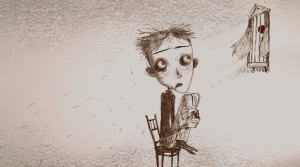
“The Boy Who Fed on Nightmares” is another original fairy tale in which a boy bargains with a witch to get rid of his bad memories. However, despite getting rid of his nightmares, the boy cannot become happy. Like Moon-young, Gang-tae, and Sang-tae, the boy must learn to overcome his painful memories in order to grow up:
“… He shouted at her with so much resentment, ‘All my bad memories are gone. But why can’t I become happy?’ Then the witch took his soul as they had promised and told him this: ‘Hurtful, painful memories… Only those with such memories buried in their hearts can become stronger, more passionate, and emotionally flexible. And only those can attain happiness.’”
Moon-young and Gang-tae find healing through each other. Moon-young draws Gang-tae out of his shell and encourages him to be “selfish” in order to face his past trauma. If he is black, she is white; what he lacks in outspokenness, she makes up for in unrepressed desire. Seo Ye-ji strikes the right balance when portraying Moon-young; she is confident, unapologetic, and seemingly uncaring, but still vulnerable and haunted by her troubled past. Not to mention, her styling is immaculate. The relationship between Moon-young and Gang-tae hinges upon their differences (or what seem to be differences at first), and the result is an interesting power struggle. Rather than the plot, the drama seems to revolve on the relationship between the pair.
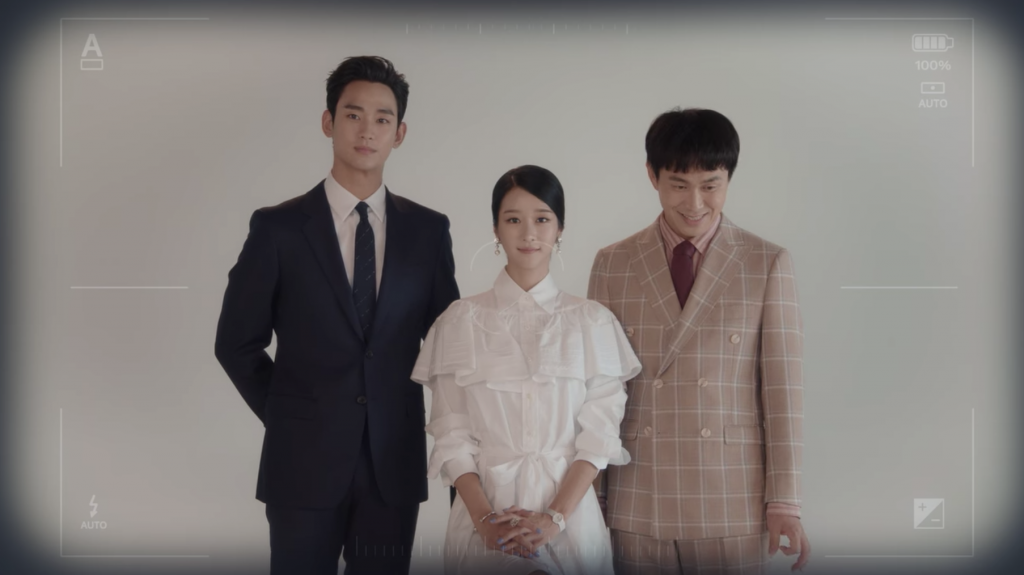
Often stuck between the Moon-young and Gang-tae is Sang-tae; at first, it seems Moon-young is jealous of the brothers, who are thick as thieves. Their warm relationship foregrounds the story, not only as a source of trauma for Gang-tae, but as a site of struggle for each to assert their own independence. It is Moon-young who hires Sang-tae and empowers him as an artist, his ultimate dream and source of greatest happiness. Though the entire drama is well-cast, it absolutely would not be the same with Oh Jung-se portraying Sang-tae. He portrays Sang-tae with care, detail, and realism that does not caricature autism spectrum disorder or allow for Sang-tae to be defined by it.
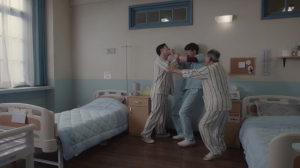
Of course, the danger of portraying autism spectrum disorder or mental health disorders is that it will lead to a monolithic (and therefore poor) understanding of the disorder. For the most part, It’s Okay to Not Be Okay largely succeeds in not creating caricatures of mentally ill patients. On one hand, through the lens of the fairy tale that the drama cultivates, disbelief must be suspended. Still, the illusion gets broken several times when audiences are confronted by the fact that OK Psychiatric Hospital is headed by an eccentric doctor with questionable practices and its staff members are careless and at times unprofessional. The drama would have been strengthened by a more nuanced take on mental health issues. This might have been achieved by focusing more episodes on the vignettes of individual patients (like Kwak Dong-yeon’s).
About halfway through, the drama shifts to focus from the world of OK Psychiatric Hospital to the comparatively dark world inhabited by Moon-young, which takes the form of her childhood home. In an effort to become closer to Gang-tae, Moon-young all but kidnaps Sang-tae and insists they move in with her (under the guise that Sang-tae will become her live-in illustrator). This shift refocuses the show on the budding romance between Moon-young and Gang-tae and the conflicts it raises between them.
This shift might have been another site of nuance, but instead, reverted to the “childhood acquaintances” trope as a way to easily explain their connection. Additionally, some of Moon-young’s violent and antisocial behavior eventually becomes normalized (if not neutralized) through her romance with Gang-tae and Sang-tae. Though initially Gang-tae reacts aversely to her behavior, there are few, if any, repercussions when she nearly drives him off a jetty or shouts “I’ll kill you” at him. It doesn’t seem altogether necessary for Moon-young to have been “diagnosed” by her peers with ASPD because of the ways in which her behaviors are normalized within the larger story. Rather, she comes off more as a woman traumatized by past abuse, unable to express herself outside of writing children’s books, and desperate for attention. She has odd means, but manages to empathize with others and “heal” them in some way in the end.
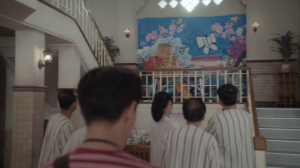
Most frustratingly, the “defeat” of the story’s villain is unsatisfying. Much of the plot revolving around the villain – whose identity is a mystery for the majority of the drama. Gang-tae and Sang-tae are forced to relocate once a year due to Sang-tae’s fear of butterflies. It turns out that Sang-tae witnessed his mother’s murder, but only remembers that the killer wore a butterfly brooch. The killer is eventually revealed to be Moon-young’s mother, who has undergone intensive plastic surgery to disguise herself and work at the OK Psychiatric Hospital as a caregiver. Though the writer didn’t drag out the villain’s reveal, which is often the case, the threat she poses is too easily resolved for the suspense that was built up around her. She is easily vanquished and put in jail.
The character-driven format of the drama might help answer some of the questions surrounding the demise of Moon-young’s mother. One major question among fans is how she even managed to survive at all. Shelving such questions, major plot holes have less significance when you consider them through the perspective of the characters and their fallible memories. Moon-young seems to understand this in her final exchange with her mother; Moon-young subverts the power she previously held, symbolized by the butterfly: “To us the butterfly is a symbol of cure. A cure that heals our soul.” Rather than erase the butterfly from her memory, she changes the signifier to be one of healing.
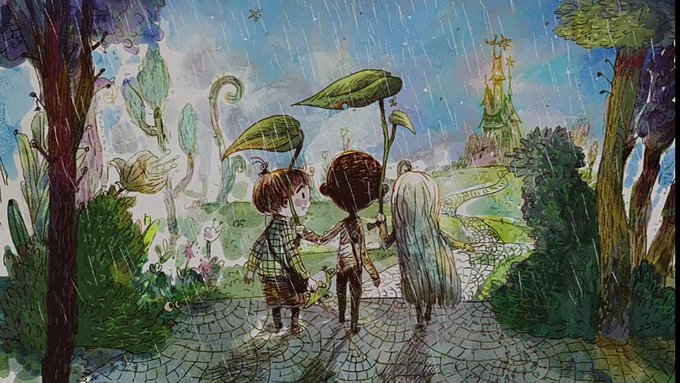
Thus, our heroes achieve their happy ending in true fairy tale fashion. The evil witch has been defeated and the main characters have triumphed. It is moving to watch as Moon-young, Gang-tae, and Sang-tae become a family and work through their past trauma together. In a poignant montage, the trio go on a trip in the RV that Sang-tae has always dreamed of (if you move once a year to avoid the butterflies, you might as well make your home mobile). This finale is worth the pain and is ambiguous enough to feel real; with Sang-tae taking one path to become an illustrator and Moon-young and Gang-tae continuing on their camping trip.
Though they will surely face difficulties and will have to continue to deal with traumas old and new, it is reassuring to know that they have found family in each other. They finally have the courage to live happily ever after.
(Images via tvN, Netflix)

